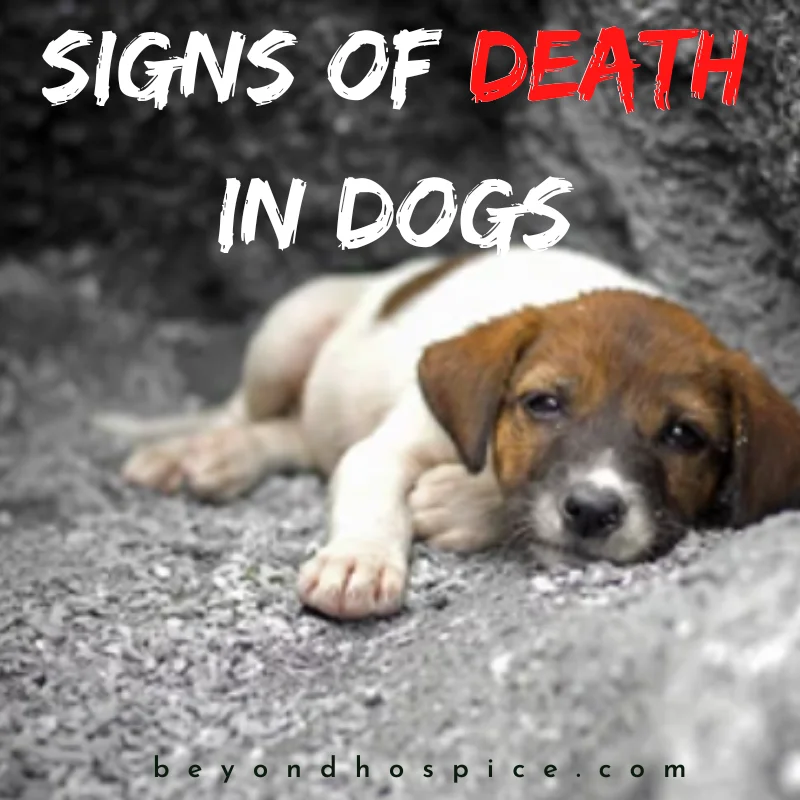Signs of Death in Dogs & What to do to Help a Dying Dog

Signs of death in dogs — This remains one of the most dreaded topics dog owners want to discuss—the thought of saying a final goodbye to your loving dog and perhaps, your best friend. A day you will be left wondering and pondering what to do to help your dog end well. Death is part of life for all living creatures and dogs are not exempted from this. Identifying the signs of death in dogs is something most dog owners don’t want to think f let alone, look out for these signs.
Death in dogs could be caused by various factors such as size, environmental impact, breed, age, genetics, etc. The thought of losing your dog usually comes with a whole roller coaster of thoughts and emotions but we all in the end have to understand that there is a time for everything including death.
Signs of death in dogs
Lethargy
This is one of the earliest signs of death in dogs. During this phase, you will find your dog lying in one spot for a prolonged period—usually, an unusual spot, lack of energy for walks, loss of interest in play and toys, and loss of interest in acknowledging you or other family members. Do note however that lethargy could be a symptom of other health challenges but if you have ruled out the challenge and they still continue like that, then it’s likely a pointer to its last days.
Depression
Prolonged lethargy, lack of interest and fatigue can lead to depression. Depression remains one of the common signs of death in dogs and this is a result of the painful experience they are going through.
Loss of Appetite
How would you describe offering your dog its best treat but it rejects it? That action is enough pointer to the fact that your dog is not okay and there is nothing to hide anymore. It may be so bad that they even refuse to take water as well. The last days of your dog will have your dog losing any sensation of hunger as well as thirst. This condition can be accompanied by vomiting, diarrhea or any other gastrointestinal symptoms.
Again, just because your dog displays these symptoms does not mean they are dying – it could be symptoms of some other health conditions.
Incontinence
Lack of voluntary control over urination or defecation is one of the signs of death in dogs. This is a pointer that the dog’s internal organs are not functioning properly anymore which has possibly led to them losing control of their bladder and bowels.
In such cases, they may need extra help to be able to move to ease themselves.
Difficulty in Breathing
Dogs may also experience difficulty in breathing characterised by lengthy gaps between inhaling and exhaling, uneven breathing, change in the sound of breathing, etc.
Lack of Co-ordination
This may play out as a lack of control. You could find dogs wandering around the home aimlessly or just looking lost in the neighbourhood. Shaking and convulsions while lying down can also be noticed.
Seizures
Having seizures can also be a sign of death in dogs. The seizures can be triggered by kidney failure, metabolic changes or brain-related problems.
Seeking Comfort
Knowing what is ahead, your dog will want to spend as much time with you as possible and appreciate some empathy from you as well. You can show this by gently stroking them and reassuring them with a soft voice.
Poor grooming
Your dog’s fur will appear unkempt and dull as a result of a prolonged decrease in hygiene and grooming habits. The lack of grooming is likely a result of the discomfort and pain associated with grooming at that stage.
Some other symptoms include;
- Temperature changes
- Anxiety
- Disinterest
- Diarrhea
- Dull eyes
- Vomiting
- Weight loss
- Body odor
- Detachment
- Movement problems
How to help a dying dog
- Talk to your veterinarian before you proceed with any medications.
- Do not pressure your dog to get active rather offer them a comfortable, clean and peaceful place to relax.
- Be present with your dog.
- Keep them in areas that have got nothing that they could bump into, get injured or be knocked over.
- During seizures, hold them close and offer comfort till the seizures disappear.
- Limit your dog’s level of movement if possible.



